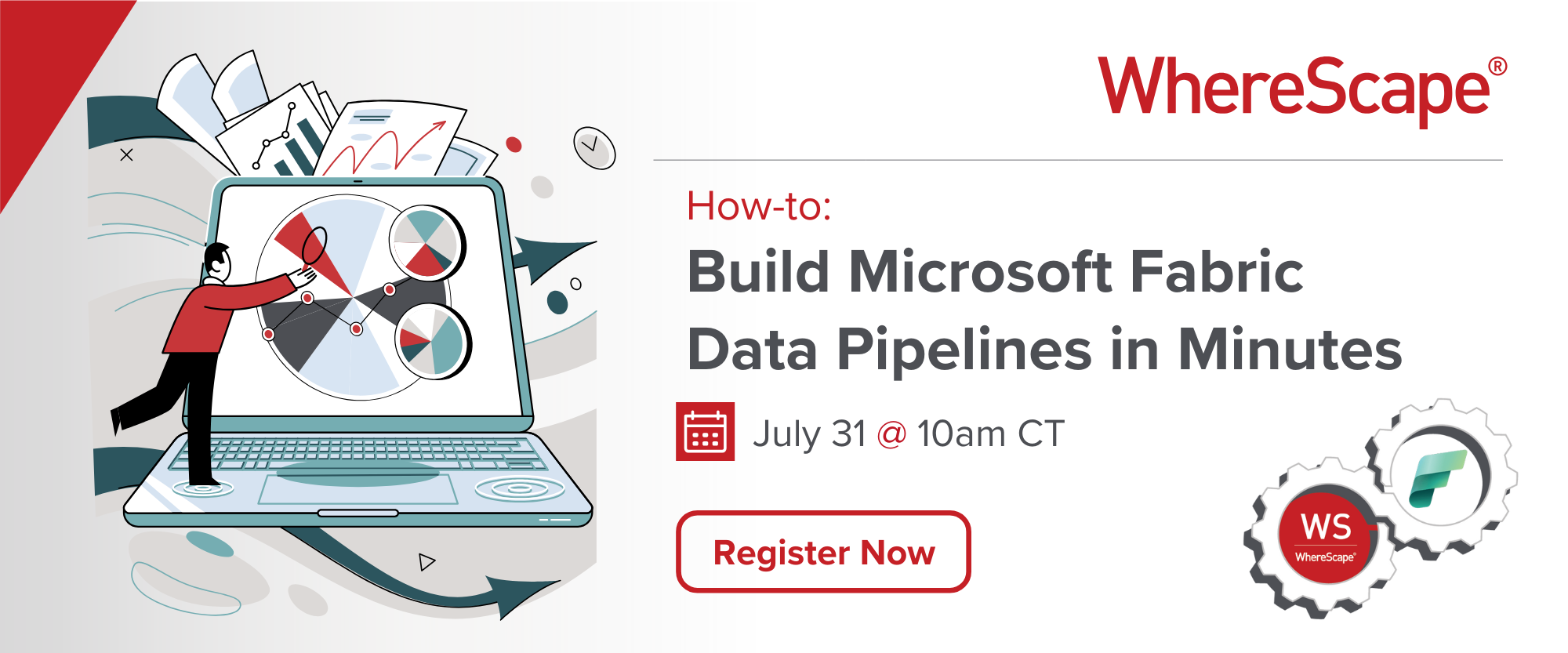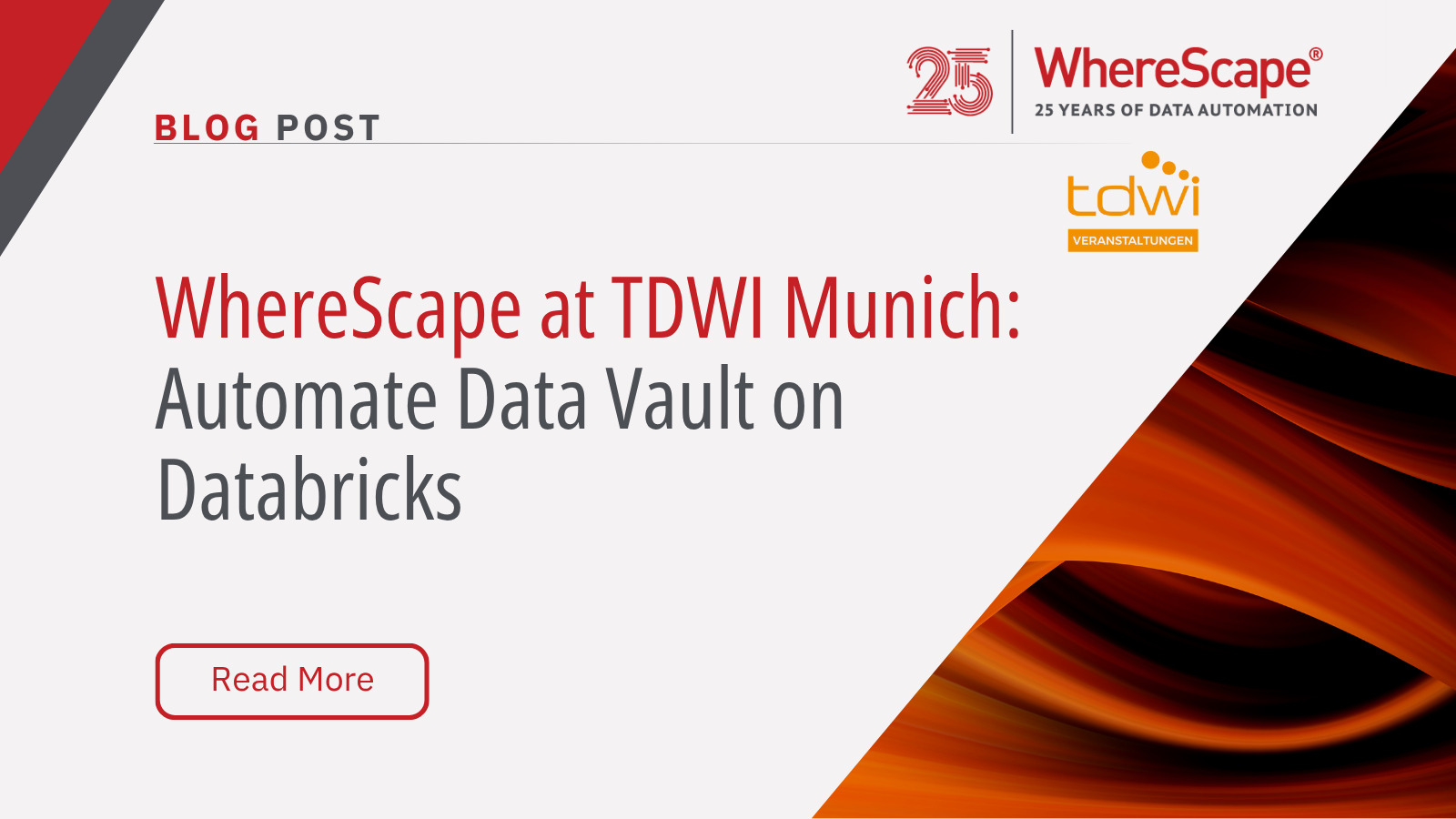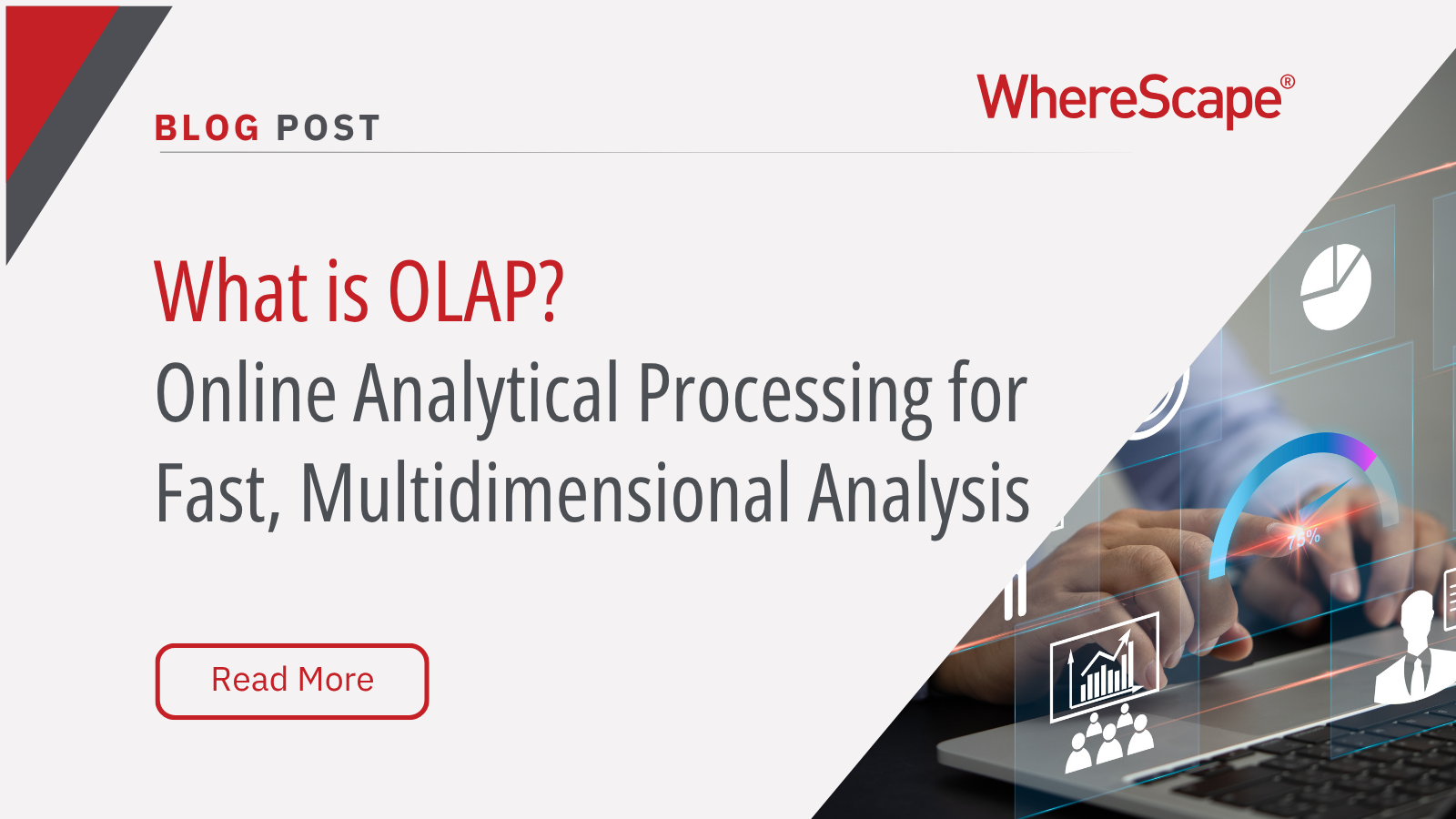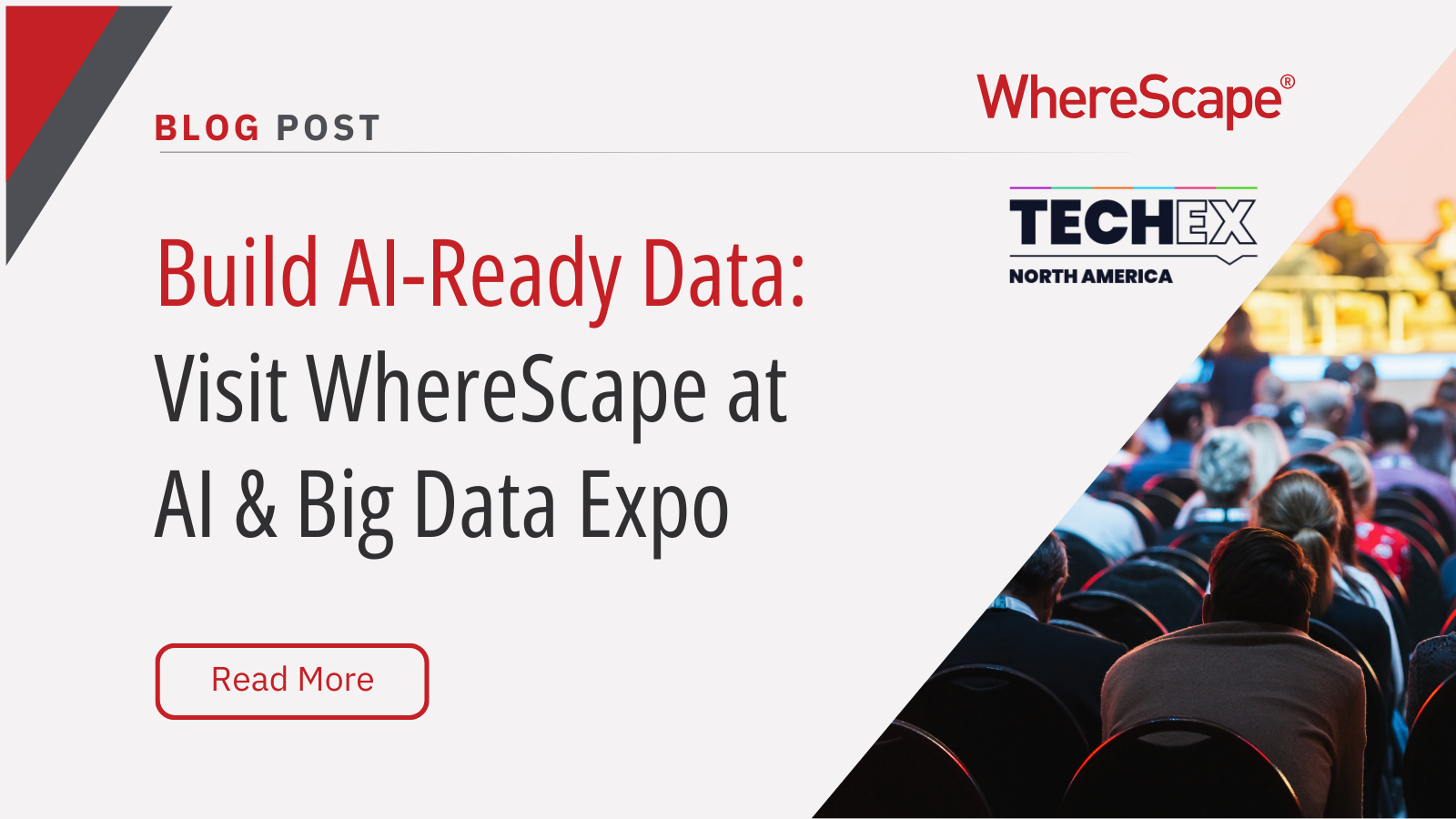Join our fast-and-friendly virtual tour to...
Webinar Recap: Navigating the Future of Data Analytics
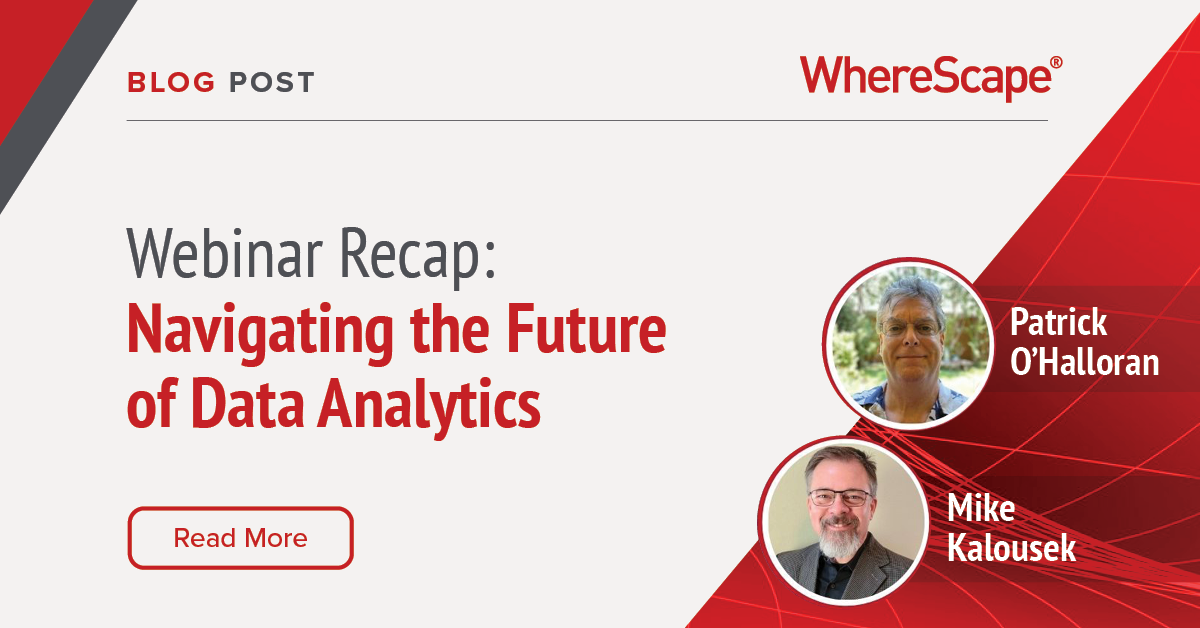
In an era where data is the new gold, understanding its trajectory is crucial for any forward-thinking organization. Our recent webinar, “Capitalizing on Data Analytic Predictions by Focusing on Cross-Functional Value of Automation and Modernization,” hosted in partnership with infoVia, stood as a pivotal gathering in the dynamic and continuously evolving field of data analytics.
This session didn’t just peek into the future; it provided a roadmap for navigating the complexities and opportunities that lie ahead. Drawing a global audience, the webinar offered a rare opportunity to discuss Gartner’s data analytics predictions up to 2028 and address pressing industry challenges, guided by esteemed experts Patrick O’Halloran, and Mike Kalousek.
Experts Lead the Way
Patrick O’Hallora, Solutions Architect at WhereScape, an IT veteran with over three decades of experience, and Mike Kalousek, the COO at InfoVia, guided the session enriching it with their expert analyses and real-world insights. They didn’t just steer the conversation; they enriched it with their expert analyses and real-world insights.
Patrick brought to the table a wealth of knowledge about evolving IT landscapes. He shared compelling anecdotes from his career, illustrating how data analytics has transformed over the years. His ability to connect historical trends with future predictions provided a unique, holistic view of the data analytics journey.
Mike, on the other hand, complemented Patrick’s technical prowess with his strategic business acumen. As COO of a leading tech firm, Mike offered a fresh perspective on how companies can integrate Gartner’s predictions into their business models. He discussed the practical implications of adopting new data technologies, emphasizing the importance of aligning them with business objectives for maximum impact.
Decoding Gartner’s Forecasts
The webinar dove into Gartner‘s predictions, unraveling the complexities and future trends across four pivotal areas: Strategic Leadership, Data Architecture, Data Automation in AI, and Data Security.
Strategic Leadership:
The discussion on Strategic Leadership was particularly enlightening. A striking forecast was that 80% of early ‘data mesh’ adopters are predicted to fail in meeting strategic SLAs. ‘Data mesh’ was defined as a decentralized approach to managing data, where domain-oriented data teams are responsible for their data assets. This concept challenges the traditional centralized data monoliths, advocating for a more agile and responsive data infrastructure.
The conversation underscored the growing importance of a Chief Data and Analytics Officer (CDAO) in bridging the gap between data strategies and business outcomes. The CDAO’s role is evolving to not just oversee data management but to drive data as a strategic business asset, ensuring that data strategies are aligned with and support the organization’s broader goals.
Data Architecture:
In Data Architecture, the spotlight was on the transition from traditional physical data centers to more agile, scalable cloud platforms. This shift signifies a broader movement towards digital transformation, offering enhanced flexibility, scalability, and cost-effectiveness.
Patrick and Mike discussed the rise of multi-model data platforms and polyglot persistence architectures. These architectures are crucial for handling diverse data types and workloads, enabling organizations to effectively manage both structured and unstructured data. The focus was also on the importance of business-centric data architectures that align closely with business needs and objectives, fostering a more effective and strategic use of data.
Data Automation in AI:
Data Automation and AI emerged as critical themes. The speakers highlighted how automation is becoming a key driver of efficiency in data analytics, reducing manual efforts and speeding up data processes. They explored the integration of AI and machine learning in data analytics, discussing how AI is increasingly being used to refine data processes, enhance data quality, and drive advanced predictive analytics.
The role of AI in automating complex data tasks, such as data cleansing, integration, and analysis, was emphasized. This not only streamlines data workflows but also enables more accurate and faster decision-making, leveraging AI’s capabilities to uncover insights that might not be apparent through traditional analysis.
Data Security:
Finally, the session concluded with critical insights into Data Security. In an era where data breaches are increasingly common, the importance of robust data security measures was stressed. The discussion touched upon the latest trends in data encryption, access controls, and the implementation of advanced security protocols like Zero Trust architecture.
The role of regulatory compliance in data security, especially with evolving data protection laws like GDPR and CCPA, was also discussed. The experts highlighted the need for organizations to not only secure their data against external threats but also to ensure compliance with these regulations to avoid legal and reputational risks.
Metadata and Data Quality at the Forefront
In the webinar, Metadata and Data Quality were heralded as critical pillars of modern data management and analytics, with an in-depth technical discussion on their roles and implications.
The Critical Role of Metadata:
Metadata, often referred to as “data about data,” was spotlighted as the crucial framework supporting effective data management. The speakers delved into its role in enhancing data discovery and governance. They emphasized how metadata provides context, making data understandable and usable across various business functions.
The technical aspects of metadata management were explored, focusing on the importance of metadata in enabling data lineage – tracing the origin, movement, and transformation of data. This is particularly vital in complex environments where data moves through multiple systems and transformations, allowing for better tracking and auditing of data.
Another key area discussed was the role of metadata in simplifying data migration projects. By providing a comprehensive view of data structures, relationships, and dependencies, metadata management significantly reduces the complexities and risks associated with data migrations.
The Foundation of Data Quality
Data Quality was highlighted as the bedrock of trustworthy analytics and AI systems. The panelists discussed the multifaceted nature of data quality, encompassing accuracy, completeness, consistency, reliability, and relevance.
The technical conversation extended to the processes and tools for maintaining high data quality. They discussed automated data quality tools that leverage machine learning algorithms to identify and rectify data quality issues. These tools play a crucial role in ensuring that data is clean, accurate, and suitable for analysis.
The impact of poor data quality on business operations and decision-making was a significant point of discussion. Compromised data quality, as they pointed out, can lead to erroneous insights, flawed decision-making, and potential reputational damage. The panelists emphasized the need for continuous data quality monitoring and improvement to ensure the integrity and reliability of data-driven insights.
Wrapping Up with Key Insights:
The session closed by reiterating the importance of understanding data for organizations looking to leverage analytics. The envisioned future of data analytics is one where data warehouse automation, AI, and top-notch data management converge to foster insightful, strategic business decisions.
Don’t let the insights stop here. Watch the webinar on-demand to dive deeper into how you can harness the power of data analytics for your organization. Click here to access the recording and continue your journey towards data-driven excellence or book a demo now.
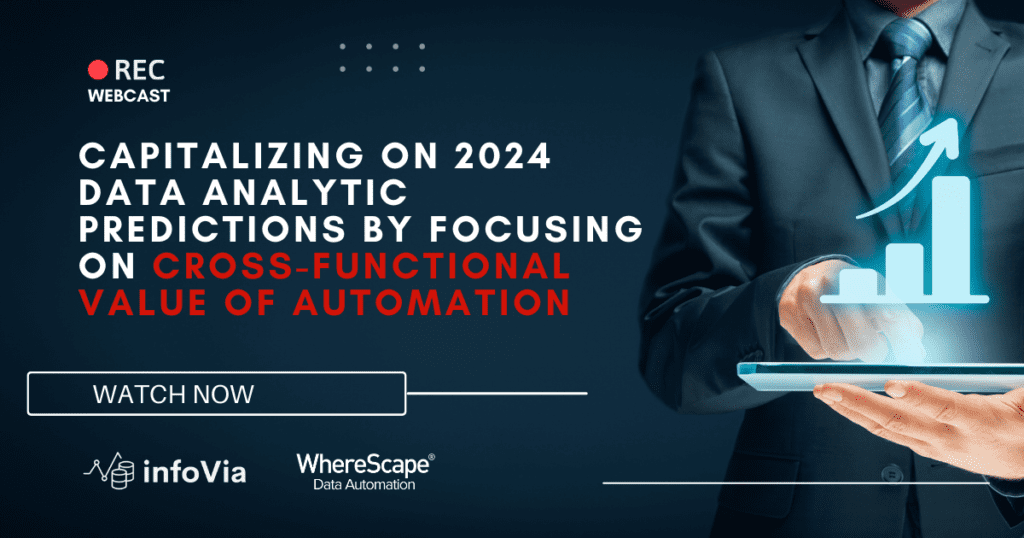
WhereScape at TDWI Munich: Automate Data Vault on Databricks
WhereScape at TDWI Munich 2025: Automate a Full Data Vault on Databricks in Just 45 Minutes June 24–26, 2025 | MOC Munich, Germany As data complexity grows and business demands accelerate, scalable and governed data architectures are no longer optional—they're...
What Is OLAP? Online Analytical Processing for Fast, Multidimensional Analysis
Streamline your data analysis process with OLAP for better business intelligence. Explore the advantages of Online Analytical Processing (OLAP) now! Do you find it challenging to analyze large volumes of data swiftly? A Forrester study reveals that data teams spend...
Build AI-Ready Data: Visit WhereScape at AI & Big Data Expo
June 4–5, 2025 | Booth 202 | Santa Clara Convention Center As organizations scale their artificial intelligence and analytics capabilities, the demand for timely, accurate, governed, and AI-ready data has become a strategic priority. According to Gartner, through...
Automating Star Schemas in Microsoft Fabric: A Webinar Recap
From Data Discovery to Deployment—All in One Workflow According to Gartner, data professionals dedicate more than half of their time, 56%, to operational tasks, leaving only 22% for strategic work that drives innovation. This imbalance is especially apparent when...
What is a Data Model? How Structured Data Drives AI Success
What is a data model? According to the 2020 State of Data Science report by Anaconda, data scientists spend about 45% of their time on data preparation tasks, including cleaning and loading data. Without well-structured data, even the most advanced AI systems can...
ETL vs ELT: What are the Differences?
In working with hundreds of data teams through WhereScape’s automation platform, we’ve seen this debate evolve as businesses modernize their infrastructure. Each method, ETL vs ELT, offers a unique pathway for transferring raw data into a warehouse, where it can be...
Dimensional Modeling for Machine Learning
Kimball’s dimensional modeling continues to play a critical role in machine learning and data science outcomes, as outlined in the Kimball Group’s 10 Essential Rules of Dimensional Modeling, a framework still widely applied in modern data workflows. In a recent...
Automating Data Vault in Databricks | WhereScape Recap
Automating Data Vault in Databricks can reduce time-to-value by up to 70%—and that’s why we hosted a recent WhereScape webinar to show exactly how. At WhereScape, modern data teams shouldn't have to choose between agility and governance. That's why we hosted a live...
WhereScape Recap: Highlights From Big Data & AI World London 2025
Big Data & AI World London 2025 brought together thousands of data and AI professionals at ExCeL London—and WhereScape was right in the middle of the action. With automation taking center stage across the industry, it was no surprise that our booth and sessions...
Why WhereScape is the Leading Solution for Healthcare Data Automation
Optimizing Healthcare Data Management with Automation Healthcare organizations manage vast amounts of medical data across EHR systems, billing platforms, clinical research, and operational analytics. However, healthcare data integration remains a challenge due to...
Related Content
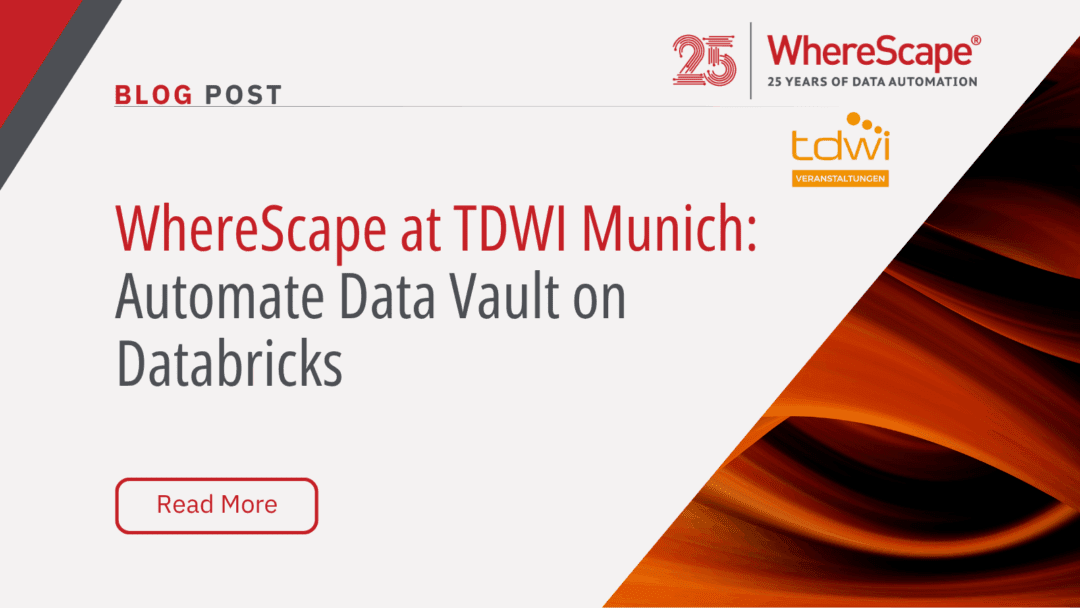
WhereScape at TDWI Munich: Automate Data Vault on Databricks
WhereScape at TDWI Munich 2025: Automate a Full Data Vault on Databricks in Just 45 Minutes June 24–26, 2025 | MOC Munich, Germany As data complexity grows and business demands accelerate, scalable and governed data architectures are no longer optional—they're...
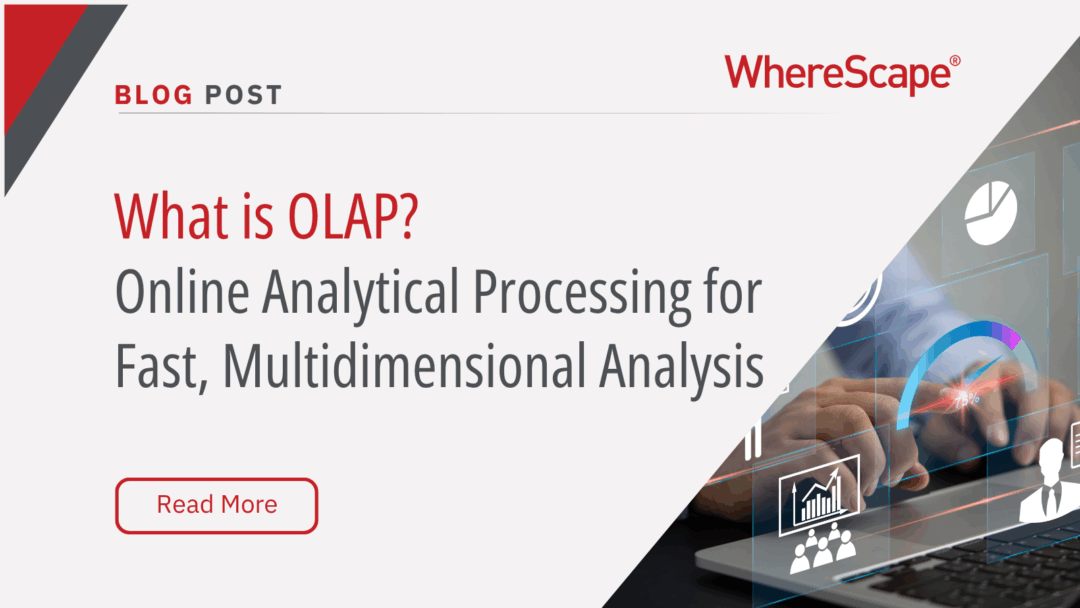
What Is OLAP? Online Analytical Processing for Fast, Multidimensional Analysis
Streamline your data analysis process with OLAP for better business intelligence. Explore the advantages of Online Analytical Processing (OLAP) now! Do you find it challenging to analyze large volumes of data swiftly? A Forrester study reveals that data teams spend...
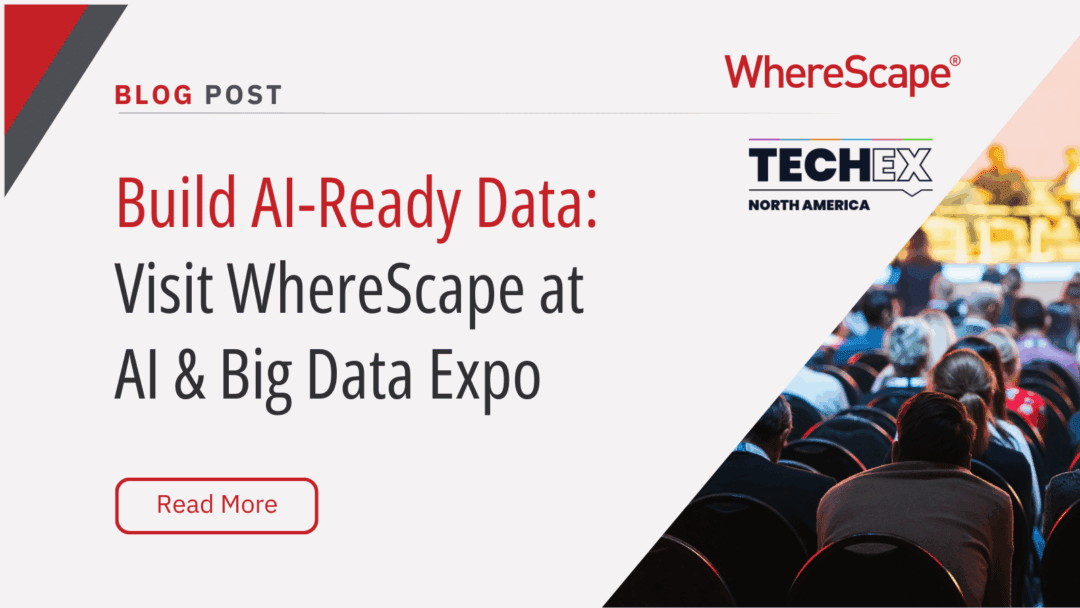
Build AI-Ready Data: Visit WhereScape at AI & Big Data Expo
June 4–5, 2025 | Booth 202 | Santa Clara Convention Center As organizations scale their artificial intelligence and analytics capabilities, the demand for timely, accurate, governed, and AI-ready data has become a strategic priority. According to Gartner, through...

Automating Star Schemas in Microsoft Fabric: A Webinar Recap
From Data Discovery to Deployment—All in One Workflow According to Gartner, data professionals dedicate more than half of their time, 56%, to operational tasks, leaving only 22% for strategic work that drives innovation. This imbalance is especially apparent when...

